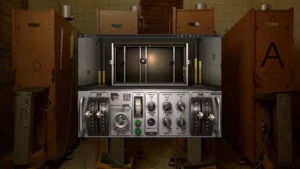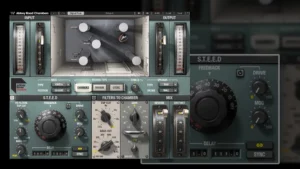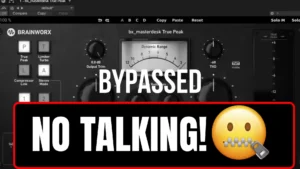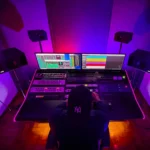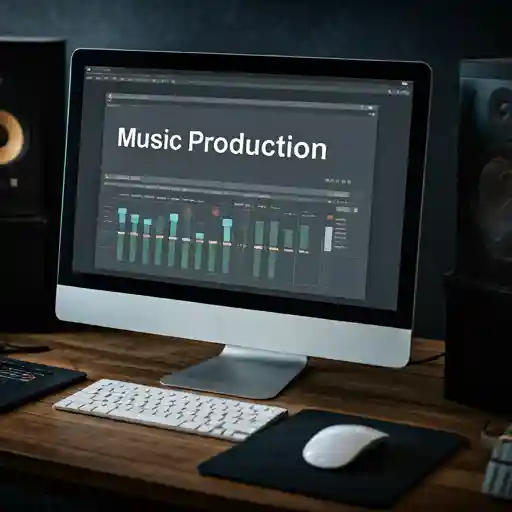
Table of Contents
How to Start Making Tracks in Your DAW: A Beginner’s Guide
Welcome to the world of music production! If you’re just starting out, a Digital Audio Workstation (DAW) will be your most powerful tool in creating music. This guide will walk you through the entire process, from the first notes to the final mix, providing essential tips to help you create your first tracks with ease. Whether you’re just experimenting or have a specific idea in mind, this guide is designed to get you producing music efficiently, creatively, and with confidence.
What is a DAW?
A Digital Audio Workstation (DAW) is a software platform that serves as the central hub for music production. It allows you to record, edit, and produce music on your computer. Unlike traditional methods, where you needed a variety of physical instruments and recording equipment, DAWs bring everything to your fingertips in one virtual space. They include features such as multi-track recording, MIDI capabilities, audio editing tools, and support for virtual instruments. Whether you’re a hobbyist or an aspiring producer, a DAW makes it easier than ever to start producing music, and today, there are options available to suit any budget or skill level.
Why Use a DAW Template?
Streamline Your Workflow
One of the best ways to get started quickly is to use a DAW template. These are preconfigured setups that allow you to dive straight into the creative process without needing to set up your workspace from scratch every time. A good template is designed to fit your music production style, helping you save time and stay focused. Here’s why templates are so effective for beginners:
- Preloaded Instruments and Tracks: Templates often come with basic instruments (like drums, synths, and pianos) already loaded, making it easier to get started without hunting for sounds.
- Preset Effects: Templates may include common effects like EQ, compression, and reverb, so you can skip the setup and start mixing right away.
- Customized Layouts: Templates provide an organized workspace with custom colors and track arrangements, keeping your DAW clean and easy to navigate.
How to Create Your Own Template
Creating your own template in your DAW is simple. Here’s how you can do it:
- Set Up Your Tracks: Open your DAW and set up the tracks for the instruments you use most often (e.g., drums, synths, vocals).
- Add Common Effects: Add effects such as EQ, compression, and reverb that you frequently use to shape your sound.
- Customize the Layout: Arrange the tracks and sections in a way that feels most intuitive to you—think of it as designing your own workspace.
- Save and Name: Once you have everything set up, save your project as a template, giving it a descriptive name (e.g., “Hip-Hop Template” or “Acoustic Guitar Template”).
Now, every time you start a new project, you can load this template and immediately begin creating without the initial setup hassle.
How to Create a Track in Your DAW
1. Start Composing Your Track
The first step in making any track is composition. Whether you’re using MIDI or audio tracks, this is where the heart of your song takes shape.
- MIDI Tracks: MIDI is a language that allows you to play virtual instruments through your DAW. Use the piano roll or MIDI controller to input melodies, chords, and rhythms.
- Audio Tracks: If you’re recording live instruments or importing samples, audio tracks are where you’ll place those recordings.
- Experimentation: Use loops and experiment with different sounds, structures, and effects. Don’t hesitate to loop sections to test new ideas or explore the different possibilities within your track.
2. Arranging Your Track
Once you have your basic composition down, it’s time to arrange the song into its complete structure. This includes sections like:
- Intro: Sets the tone for the track.
- Verse: The storytelling or main section of the song.
- Chorus: Often the most memorable part of the song.
- Bridge: Provides a contrast and keeps the listener engaged.
- Outro: A conclusion or fade-out.
In your DAW, use the arrangement tools to move these sections around, extend or shorten parts, and experiment with how the song flows. Drag-and-drop features in most DAWs make this process quick and easy.
3. Mixing and Mastering Basics
Mixing
Mixing is about balancing all the elements of your track. Here’s a quick overview:
- Volume Levels: Adjust the volume of each track to ensure no sound is overpowering the others.
- EQ (Equalization): Use EQ to shape your tracks by boosting or cutting specific frequencies. For instance, you might want to boost the bass on a kick drum or reduce mid-range frequencies on a vocal.
- Panning: Distribute your sounds across the stereo field by panning tracks left or right. This creates a more immersive, balanced listening experience.
Mastering
Mastering is the final polish of your track. It’s done after the mixing process to ensure your song sounds cohesive and professional on any system. Key mastering steps include:
- Compression: Applying light compression across the track to control dynamics and ensure a consistent volume.
- EQ: Finalizing the overall EQ to make sure all frequencies sound clear and balanced.
- Volume Leveling: Ensuring that your track is at an optimal volume and can be played back on a variety of devices without distortion.
10 Essential Tips for Beginners
1. Use Templates
Setting up your workspace ahead of time can save you hours in the future.
2. Explore Virtual Instruments
Expand your sound library by experimenting with different virtual instruments, plugins, and sample packs. This will give you a wide variety of sounds to work with.
3. Master Keyboard Shortcuts
Learning your DAW’s keyboard shortcuts will dramatically speed up your workflow, especially when it comes to editing and navigating through tracks.
4. Don’t Underestimate Samples
Samples aren’t cheating—they can be the key to unlocking creativity. Use them to inspire new ideas, layer your tracks, or give your song a professional touch.
5. Use MIDI Files
MIDI files can serve as a great starting point. You can take existing MIDI melodies or beats and customize them to fit your style.
6. Leverage AI Tools
Many DAWs now include AI-powered tools that can help generate melodies, rhythms, or even suggest chord progressions. Use these features to spark new ideas or enhance your track.
7. Study Reference Tracks
Import a song that inspires you into your DAW to analyze its structure, arrangement, and mix. This can help you understand how professional tracks are built.
8. Capture Ideas Instantly
Inspiration can strike at any moment, so always have a way to record ideas, whether it’s with a mobile app, voice memo, or notebook.
9. Keep Unfinished Ideas
Sometimes, the best tracks come from revisiting an old, incomplete idea. Keep all your loops, drafts, and partial songs—you may find a hidden gem!
10. Embrace the Learning Curve
Remember that music production is a skill that develops over time. Don’t get discouraged by mistakes—learn from them and keep experimenting.
FAQs
What’s the best DAW for beginners?
There’s no one-size-fits-all answer, but some beginner-friendly DAWs include Ableton Live, Logic Pro, and Reaper. Each offers unique features and a relatively easy learning curve, making them perfect for those just starting out.
Do I need expensive gear to start?
No, you don’t need top-of-the-line gear to get started. A basic computer, a good DAW, and a set of headphones are all you need to start producing. As you progress, you can add equipment like MIDI controllers and audio interfaces for better sound and more control.
What’s the difference between MIDI and audio tracks?
MIDI tracks contain digital instructions that tell virtual instruments how to play, while audio tracks contain actual sound recordings, such as vocals, instruments, or samples.
How can I improve my mixing skills?
The best way to improve your mixing is through practice. Start with simple mixes and gradually experiment with different effects, panning, and EQ techniques. Listening to your favorite songs and trying to replicate their sound can also teach you valuable techniques.
Are samples and MIDI files considered cheating?
Not at all! Samples and MIDI files are industry-standard tools. Many professional producers use them to streamline the creative process, especially for inspiration or layering different textures into a song.
Now that you’re equipped with the basics, dive into your DAW and start creating! Music production is an exciting and rewarding journey, and with practice and patience, you’ll soon be making tracks you can be proud of. Happy producing!
Find My Labels, find Record Label Send Your Demo | findmylabels.com |
SM Mastering | Mix & Master Services smmastering.com



